Midea Dehumidifier Review: A Game Changer in North Carolina Humidity
Updated: May 06, 2024
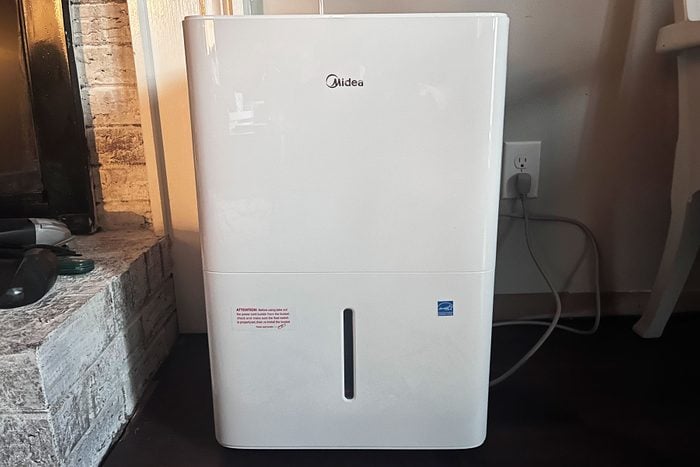
The Midea dehumidifier helped this native northerner survive the humid summers months in the South. Here's why I recommend it for most homeowners.
Our editors and experts handpick every product we feature. We may earn a commission from your purchases.
There are two big things I’m still getting used to after moving from New York to North Carolina: A lack of good bagels (I said what I said) and the humidity. I’m writing this in mid-April, and I’m already drenched in sweat the second I walk out the door. Sure, the air conditioner feels nice once I walk back in, but that’s not doing much, if anything, to eliminate excess moisture that can create mold and aggravate certain respiratory conditions (not to mention it causes everything to feel sticky).
That’s where my Midea dehumidifier comes in handy. I’m not exaggerating when I say this thing has become a lifesaver in recent weeks, and I intend to keep it running until Mother Nature decides to bless me with a cool, crisp breeze again.
In my Midea dehumidifier review, I’ll explain why this machine impressed me so much, the features that separate it from other dehumidifiers and who should consider one for their living space or crawl space.
What is the Midea dehumidifier?
Midea may not be a household name like GE or Samsung, but the Chinese-based company is one of the largest appliance manufacturers in the world. They make everything from refrigerators to air fryers, though they’re best known for their air conditioners and dehumidifiers.
The Energy Star-certified Midea dehumidifier I’m talking about today comes in three sizes based on your living space — 1,500, 3,000 and 4,500 square feet options. Like other dehumidifiers out there, it sucks excess moisture out of the air and collects the water in a tank located at the bottom of the machine on the front side panel.
But unlike similar machines, it comes with premium features such as adjustable humidity, wheels and a quiet noise level despite being on the larger side. It can also be connected to the Midea Air app to monitor its performance and your room’s air quality.
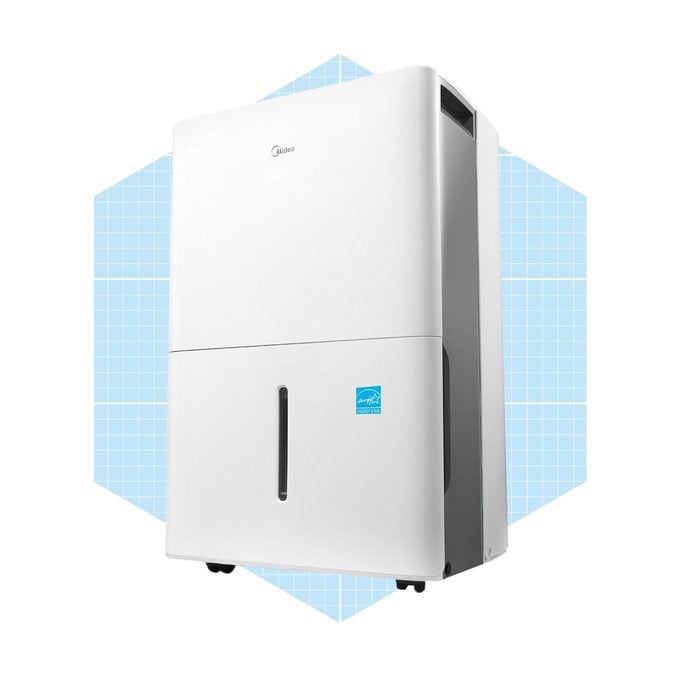 VIA MERCHANT
VIA MERCHANT
I Tried It
Midea Dehumidifier
An Energy Star-certified dehumidifier that covers up to 4,500 square feet
Midea Dehumidifier Features
I’ve tested and used more than ten dehumidifiers, so let me tell you why the Midea Energy Star-certified dehumidifier is the only one I’ve kept and continue to use.
Side venting
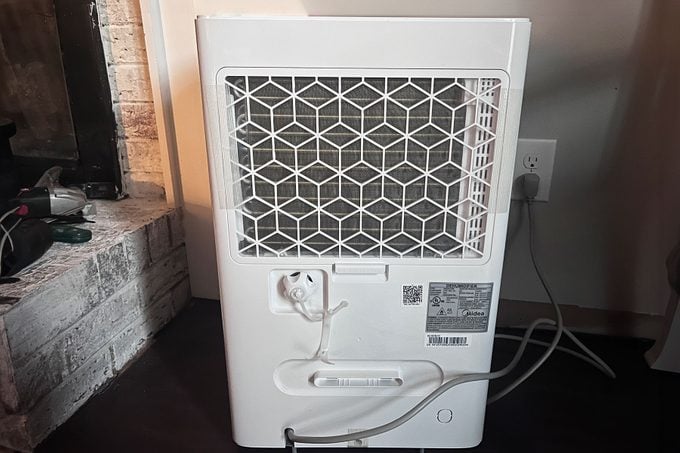
The Midea dehumidifier uses side air venting, unlike most dehumidifiers that vent from the top or the back. Honestly, I don’t think this made much of a difference in performance. If anything, they probably went with side venting because you’re less likely to block the airflow that way.
For example, if you had a dehumidifier with a vent in the back, you couldn’t place it flush against a wall because the vents would be blocked. I also think the air feels much cooler coming out of the sides than from the back or top, and though I have no way of proving that it was other online reviewers mentioned, I’m not the only one who thinks it.
Although dehumidifiers don’t cool rooms, I have to say that my room does feel considerably cooler when this thing is running.
Adjustable humidity
While excess moisture can be a problem — it can lead to mold and other hazardous conditions — having an area that’s too dry can also be an issue. Remember, humidity refers to the amount of water vapor in the air. Low humidity can lead to dry skin, coughing, and damage to wood and paint.
The Midea dehumidifier has an adjustable humidity feature, allowing you to set the humidity anywhere from 35 to 80 percent. The U.S. Environmental Protection Agency says indoor humidity should be kept to 30 to 50 percent, though that number may change depending on what rooms your dehumidifier is in.
I kept mine at around 50 percent, which gave me the best relief from the humid weather without turning my house into the Sahara. I played with this feature and found the machine responsive to changes. I could see this being useful for collectors who need to keep rooms at a precise humidity level to protect their goods, whether comic books or anything else that can be ruined by moisture or dryness.
Large Tank Capacity
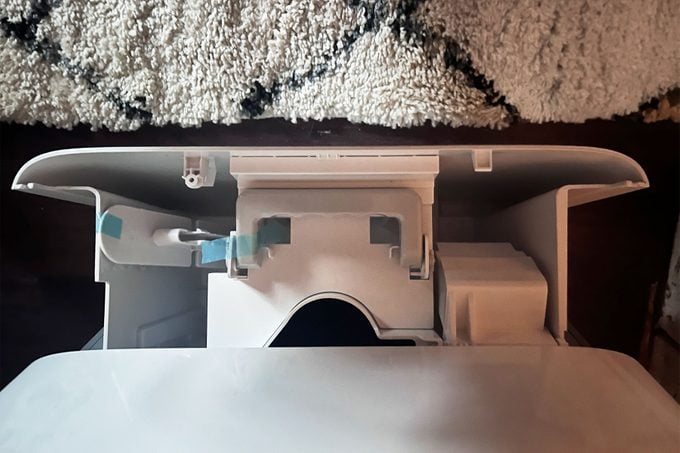
The Midea dehumidifiers’ water tank capacity depends on which size you buy. The smallest model holds up to 22 pints of water, while the largest holds up to 50. That’s an impressive amount of moisture that can easily be used to water plants, thanks to the convenient carrying handle on the reservoir.
I read multiple customer reviews stating the 50-pint tank was enough to hold a day’s moisture in some of the most humid climates, including New Orleans and southern Florida. Depending on the weather, I can go two to four days without emptying mine (outside Charlotte, NC).
Auto Shut-Off
Nothing is worse than waking up or returning from work and finding a large puddle under your dehumidifier. Luckily, the Midea dehumidifier has an auto shut-off function to prevent overfills. The dehumidifier makes a beeping noise that will wake you up if it goes off in the middle of the night, so it’s a good idea to empty it before you sleep if you live in a very humid area.
Wheels
The Midea dehumidifier weighs 33.5 pounds, so it’s not something you’d particularly want to carry from room to room. That’s why it comes with four high-quality caster wheels for easy portability.
The wheels move smoothly on most surfaces, though like any set of wheels, they don’t do well on carpet.
Continuous Use
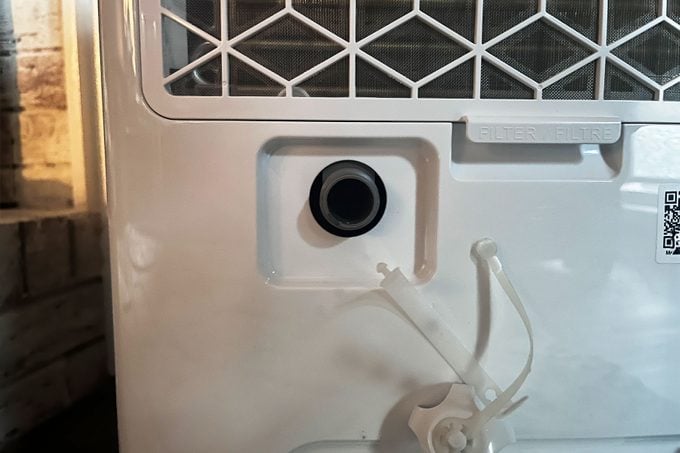
My one big knock against the Midea dehumidifier is that it doesn’t come with a drainage hose despite having an optional continuous draining function. Drainage hoses don’t cost much, so I’m wondering why the company decided not to include them. Sure, it’s easy enough to go to Home Depot or Lowes and get one, but I’m a fan of getting everything in one place, and if Midea is going to give you the option, they should provide everything to take advantage of it.
It’s one reason I still haven’t tested the continuous drainage option on this dehumidifier (well, that and North Carolina never gets that humid). Customer reviews, however, say the continuous drain function works just fine if you use it as a basement dehumidifier or live in a highly humid area.
Their one complaint is that only one model comes with a pump (it works for spaces up to 4,500 square feet). Without the pump, you’ll have to drain into a floor drain or something close to the ground.
Noise Level
For a machine of its size, the Midea dehumidifier is pretty quiet. You can definitely hear it, but it sounds more like a white noise machine than a water vacuum (hey, that’s basically what it is).
The Midea is two feet tall and 16 inches wide, so it’s not the smallest or largest dehumidifier out there, but it’s still on the bigger side. Dehumidifiers get louder as they get larger, so I was expecting a noisier dehumidifier when I first pulled this thing out of the box.
Washable Filter
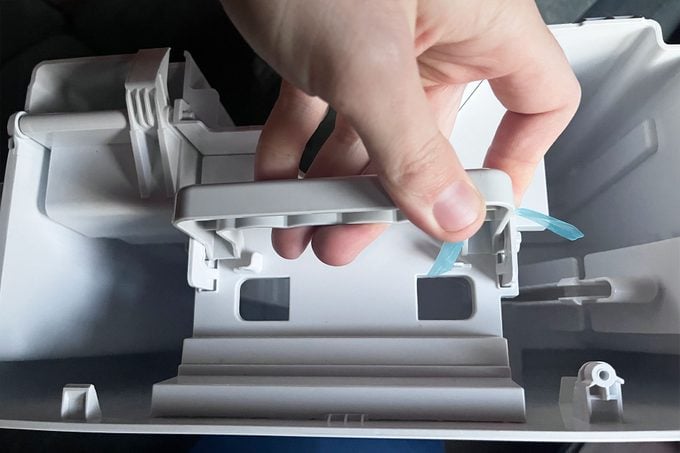
The Midea dehumidifier has a built-in filter that can be washed when needed. Most experts recommend cleaning your dehumidifiers every two to three weeks and replacing built-in filters annually. Midea, however, says their washable filter is meant to reduce the need for “expensive replacement parts,” so it seems like they’re claiming that there’s no need to replace the filter.
How We Tested It
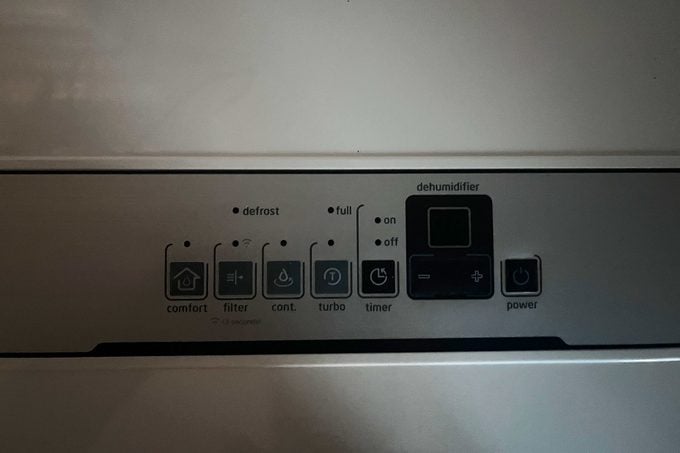
As stated, I live outside Charlotte, NC, where it can feel humid from early April to October. Why do you think Charlotteans brag about being close to the beach and mountains? It’s because we’re trying to escape the humidity!
I’ve been using dehumidifiers since moving here in August 2022, and I’ve had the Midea dehumidifier in my girlfriend’s roughly 2,000-square-foot house since September 2023 (I’m writing this review in April 2024). During that time, I tested its performance in making the house feel more comfortable and used its many features, including the adjustable humidity settings and 24-hour timer. I also moved it from room to room, noted how loud it was and monitored its performance as the months went on.
Pros
- Energy efficient
- Adjustable humidity settings
- Quiet, especially for its size
- Comes with wheels for easy portability
- No assembly required
- Large tank capacity
- Optional continuous operation mode
- Connects to Midea Air app
- 24-hour timer
- Washable filter
Cons
- It’s still quite large despite being portable
- No drainage hose included
FAQ
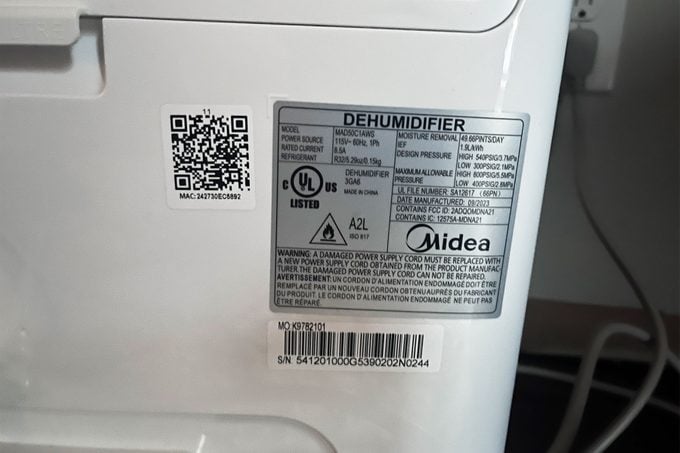
What is the best setting for a Midea dehumidifier?
The U.S. Environmental Protection Agency says indoor humidity should be 35 to 50 percent, so the best setting is the one that gets you in that range (you can monitor this with a hygrometer). For people in Florida or Louisiana, that might be on the Midea dehumidifier’s highest setting, whereas Northerners may need to put it on low.
What does the Smart button do on Midea dehumidifier?
The Smart button on Midea dehumidifiers measures the room’s humidity and adjusts the power setting to achieve the ideal humidity level, which is 35 to 50 percent. This feature isn’t available on all Midea models.
What Other Reviewers Had to Say
We’re not the only ones impressed with the Midea dehumidifier. As of this writing, it has a 4.3 average rating on Amazon and more than 9,500 five-star reviews.
“It has been running 24 hours a day, seven days a week for the past three years,” writes five-star Amazon reviewer R. Smith. “That is almost 26,000 running hours without any issues so far.”
Midea Dehumidifier vs. GE Dehumidifier
GE is a much bigger name in home electronics, but do they make a better dehumidifier than the Midea dehumidifier? Although I haven’t tested GE’s, I dare to say that the Midea is a better deal because the 50-pint option without the pump is about $60 cheaper than GE’s. The Midea dehumidifier with the pump is the same price as the GE without a pump, and the GE model with a pump is more than $300.
Hot take, but I think the price difference is mainly due to GE’s brand recognition. Let’s compare the Midea and GE dehumidifiers without the pump.
Both can cover up to 4,500 square feet of space, hold up to 50 pints of water, have a removable tank, an auto shut-off function, and wheels. Additionally, they’re almost the same size. The GE has two things that Midea doesn’t, the first being a smart function that adjusts the power settings to the room’s humidity level to optimize energy usage.
Do I think this is worth an extra $60? Not really. The Midea dehumidifier is Energy Star-certified, so we know it’s an energy-efficient appliance.
The second thing is that it comes with a drainage hose and (technically a third thing) the option to automatically or manually drain the tank. Do I think this is worth an extra $60? Again, not really, because the Midea also has a continuous drainage option, though you need to buy your own hose (Midea dehumidifier hoses cost anywhere from $12 to $20, depending on your model).
You may get a better deal on the GE dehumidifier during dehumidifier sales, though the Midea is also likely to be discounted during those times.
Final Verdict
Humidity not only feels bad, but it can be bad for our homes and lungs. The Midea dehumidifier is one of the highest-performing dehumidifiers I’ve used, and it’s the only thing that keeps the living room comfortable during the humid summer months. Its features separate it from similar models: adjustable humidity settings, smooth-rolling wheels, a surprisingly quiet noise level and a large 50-pint tank capacity.
If your house or apartment is 1,000 square feet or larger, I highly recommend buying this product before your living room starts feeling like a swamp.
Where to Buy the Midea Dehumidifier
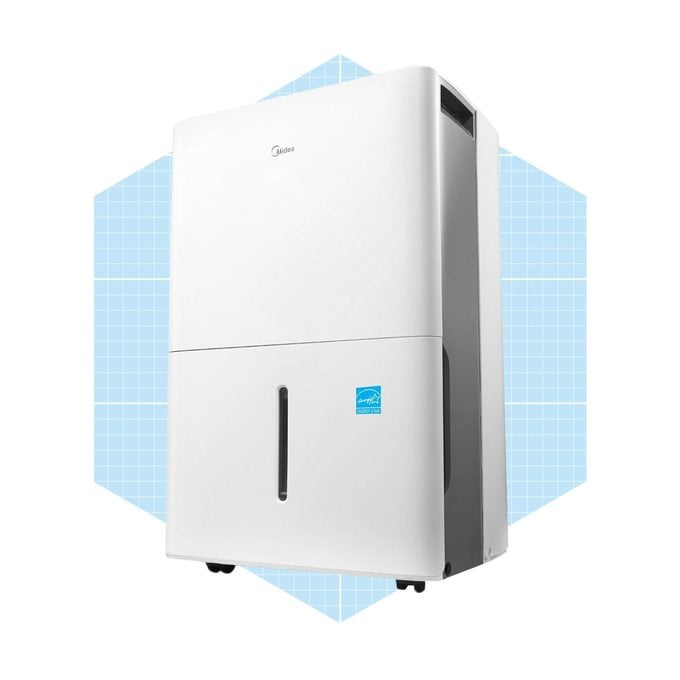 VIA MERCHANT
VIA MERCHANT
I Tried It
Midea Dehumidifier
A dehumidifier with a reusable air filter for basements and large rooms
The Midea Energy Star-certified dehumidifier is available on Amazon in three sizes. It costs about $180 for a dehumidifier that covers up to 1,500 square feet, $220 for one that covers 3,000 square feet and $240 for one that covers up to 4,500 square feet. Those models don’t come with a pump, so if you want to use the continuous drainage function, you’ll have to put it near a floor drain or a container close to the ground. The model with a pump covers up to 4,500 square feet and costs about $270.
